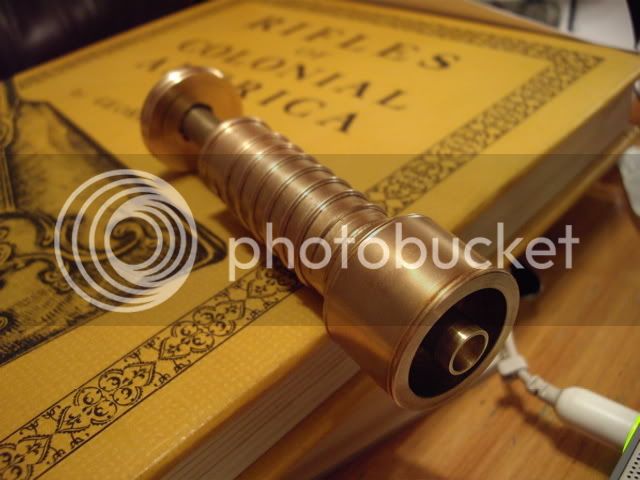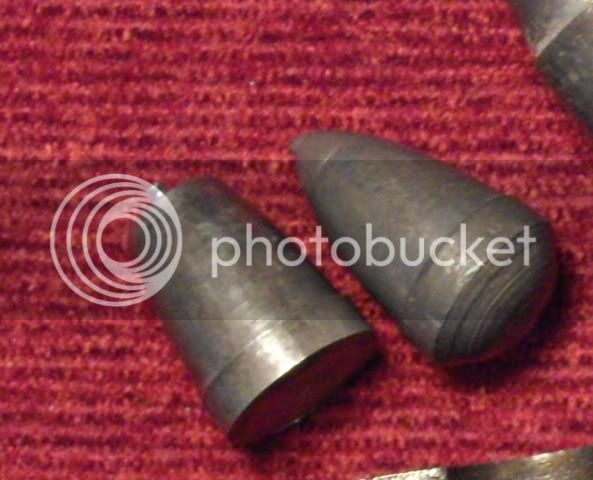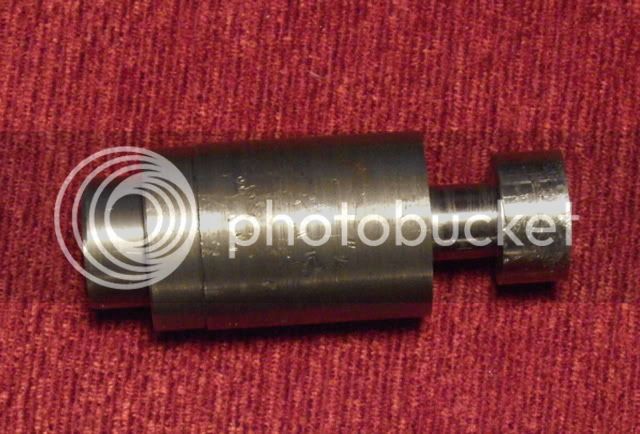Stumpkiller said:Tanker said:My local black powder shop told me that I need to shoot round ball out of my guns.
Wow! Usually gun shops are staffed by folks who have no idea about traditional muzzleloading and they think conicals are the answer. You have a great shop there. :thumbsup:
As Clyde said - certain rifles have a slow twist that will not stabilize a conical well. If yours are 1:60" to 1:72" you're better off with a round ball. 1:48" is a compromise twist in the larger bores and will do either.
But I thought the Kodiak has a very fast twist? Is that the Pedersoli? I looked up a few and they have 1:24" OR 1:48" (older versions). You might be stuck using a conical for any range if it is the 1:24" version.
Conicals give you advantages in range. But if your shots are under 100 yards they aren't at all necessary.
Back in the day 1 turn in the length of the barrel was a common twist for the RB. Since the American rifle often had a "4 foot" barrel this twist was very common. In Europe they made shor barrels Jaegers and English Sporting rifles with one turn in short barrels. By this they produced twists that were far to fast for the ball size. the result of a large ball and a fast twist, often 24-26", was a blown patch. The large ball more often than not over 62 just had too much rotational inertia to spin up with a large charge, the typical charge for rifle using a .680 RB might be 60-80 grains or less as a result of the over twisting and I think the rifling form in some instances and perhaps the ball/patch fit to the bore may have been a factor. As a result hunters in Africa or India would overload and loose accuracy or simply revert to the smoothbore.
The answer that was cooked up in the early 19th c was the fitted belted ball and two groove rifling the British Military Brunswick rifle used this system. Apparently in an attempt to over come the use of two ball sizes for the Baker. One for best accuracy, sniping, and the other for rapid reload "tactical" use.
All this in spite of testing by Baker in the late 18th c with slow twists and the Baker Military rifle having a slow twist. AND the American rifles with slow twists. It was so bad that Forsythe wrote "The Sporting Rifle and Its Projectiles" as an educational exercise. But he then went perhaps too far the other way with twists in 90 to 120" range in 16-14-12 bore rifles. I think that with a 69 (14 bore) rifle that twists slower than 72 are not needed. A 48 has proven to be a great RB twist for the calibers used in most traditional American rifles regardless of time period. When TC started making their so called "Hawken" they used the traditional Hawken twist of 48". This twist will marignally stabilize a 2 caliber long bullet in the typical American calibers. Remembering that in a 45 caliber for example, a long range bullet 3 calibers+ long required a 18 to 20" twist.
The early American experiments with a bullet was the "Picket" or Sugar Loaf" bullet. These were short pointed or flat point cloth patched bullets. The cloth patch required a short bullet with a very short contact area with the bore. About the same as a RB. These were and are very difficult to impossible to load straight without a piston started that is fitted to the muzzle of the barrel or in some cases the false muzzle. Its simply impossible to get accuracy otherwise. But the Picket would shoot much better at 200 and even 400 yards than the RB ever could. It was just not practical for hunting due to the starter employed.

Which is not only heavy its easily damaged.
The really accurate picket rifles were usually a gain twist ending somewhere in the "30s" for a twist. Since as I stated the 48" is marginal for elongated projectiles in real life.
Dan







